Lincoln, NE Pollen and Allergy Report for Summer 2023
Pollen Allergy Trends in Lincoln, NE
When is pollen lowest in Lincoln, NE?

March
Lowest month total PPM
Avg. PPM
When is pollen highest in Lincoln, NE?

April
Highest month total PPM
Avg. PPM
How does pollen in Lincoln, NE compare to Nebraska?
Lincoln has a lower average PPM than the state of Nebraska.
Lincoln yearly avg PPM:
Nebraska yearly avg PPM:
How does pollen in Lincoln, NE compare to the USA?
Lincoln has a higher average PPM than the USA.
Lincoln yearly avg PPM:
USA yearly avg PPM:
Is pollen worse this year in Lincoln, NE?
Spring 2023 was worse than spring 2022.
Spring 2023 PPM:
Spring 2022 PPM:
Average PPM in Lincoln, NE
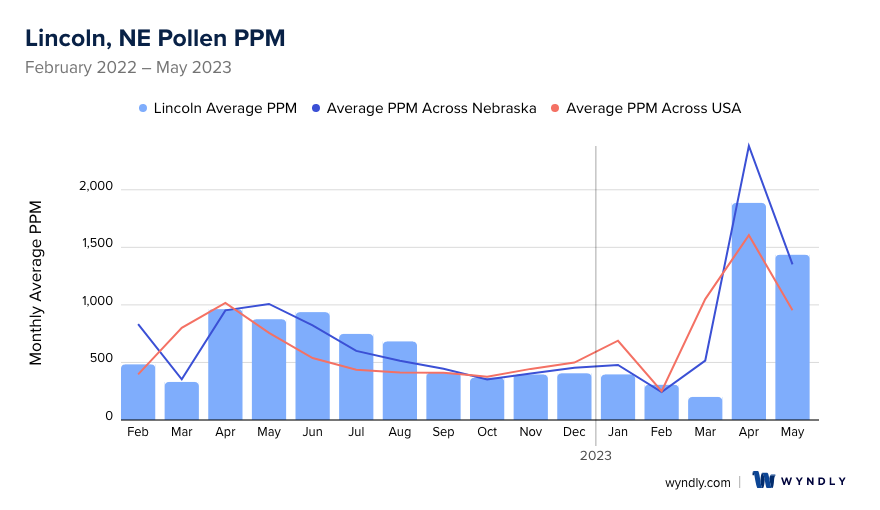
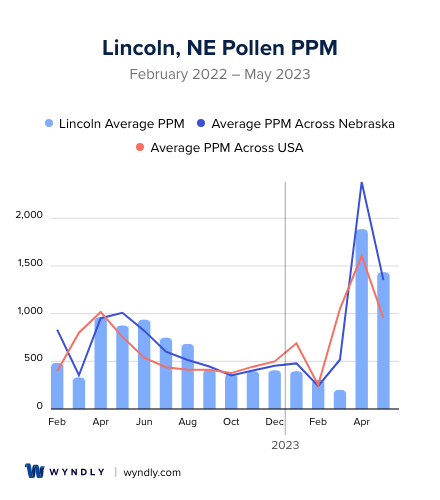
Lincoln, NE Pollen and Allergy Breakdown by Month
Grass
When is grass pollen highest in Lincoln, NE?
June has the highest grass pollen in Lincoln, NE with an average PPM of
When is grass pollen lowest in Lincoln, NE?
October has the lowest grass pollen in Lincoln, NE with an average PPM of
Tree
When is tree pollen highest in Lincoln, NE?
April has the highest tree pollen in Lincoln, NE with an average PPM of
When is tree pollen lowest in Lincoln, NE?
October has the lowest tree pollen in Lincoln, NE with an average PPM of
Weed
When is weed pollen highest in Lincoln, NE?
April has the highest weed pollen in Lincoln, NE with an average PPM of
When is weed pollen lowest in Lincoln, NE?
February has the lowest weed pollen in Lincoln, NE with an average PPM of
Lincoln, NE Pollen Monthly Breakdown by Pollen Type
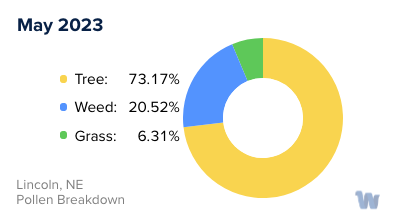
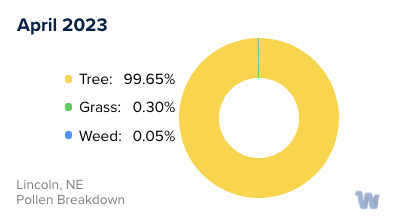
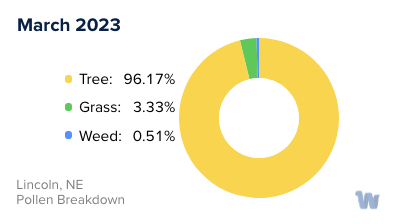
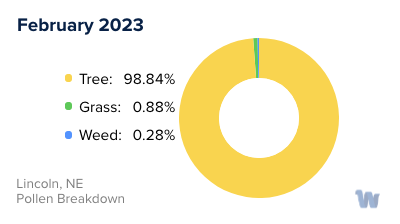
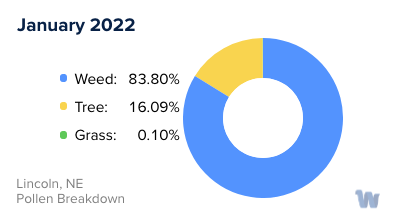
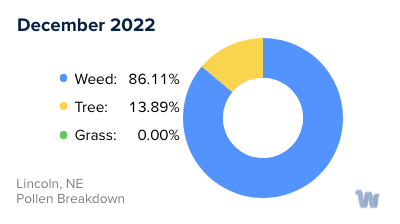
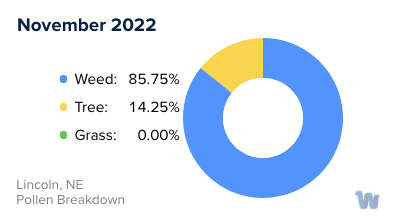
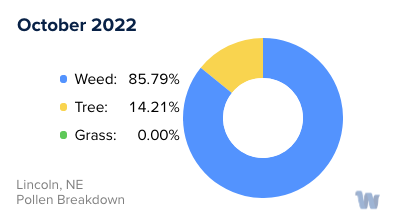
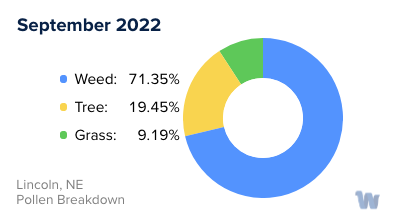
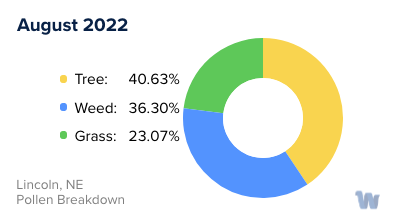
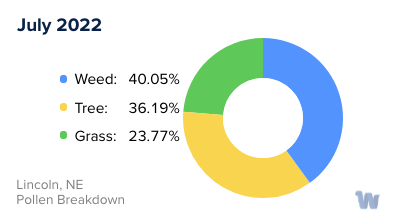
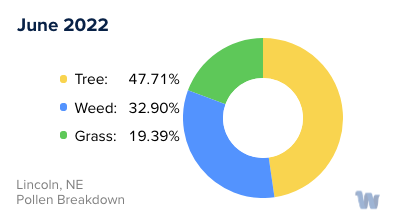
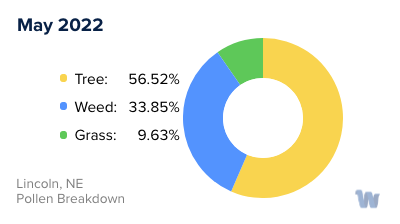
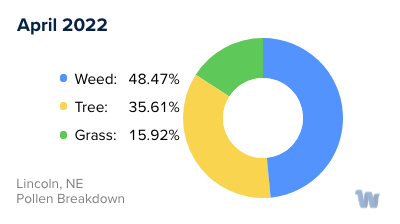
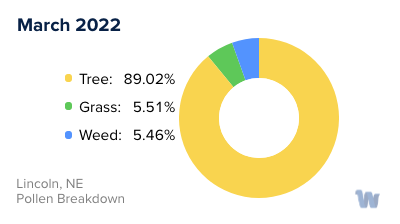
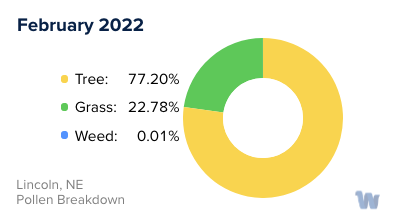
Pollen and Hay Fever in Lincoln, NE
When spring and summer take a bow in Lincoln, Nebraska, a curtain of pollen often rises, much to the dismay of allergy sufferers. Known as hay fever, or more formally as seasonal allergic rhinitis, this type of allergy is predominantly triggered by the pollen released from various trees, grasses, and weeds.
In Lincoln, trees are usually the first to debut their pollen, typically starting in late winter and continuing into spring. Oak, cedar, and pine are among the primary offenders, with their tiny, lightweight pollen particles easily carried by the wind.
As spring segues into summer, the spotlight shifts to grasses. In Lincoln, grass pollen, particularly from species such as Timothy grass, ryegrass, and Kentucky bluegrass, is a common cause of hay fever. These grasses release their pollen into the air, leading to an escalation of allergic symptoms among sensitized individuals.
Entering late summer and early fall, weeds take center stage in the pollen production performance. Ragweed, a notorious allergy instigator, is particularly abundant in Nebraska, causing many a sneeze and sniffle. Other weeds contributing to the pollen count include sagebrush, pigweed, and lamb's quarters.
Pollen levels are often at their highest during warm, windy days, when the breezy conditions help to disperse the microscopic particles far and wide. Conversely, rain can bring temporary relief, as it washes the pollen out of the air, leading to lower pollen counts.
The timing and severity of pollen seasons can vary from year to year, influenced by factors such as weather patterns, temperature, and rainfall. Understanding the pollen seasons in Lincoln, Nebraska, can aid in anticipating and managing hay fever symptoms, despite the city's changing seasons and diverse plant life.
Remember, pollen allergies are not just a nuisance; they can significantly impact quality of life. If you're sneezing, have itchy eyes or a runny nose during certain times of the year, it could be hay fever. Recognizing the signs and the seasonal pattern can be the first step towards navigating the challenges of living with pollen allergies in Lincoln, Nebraska.


